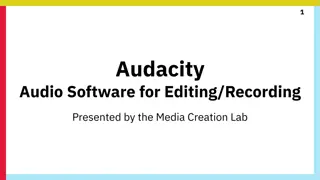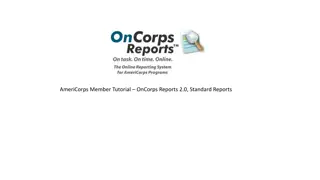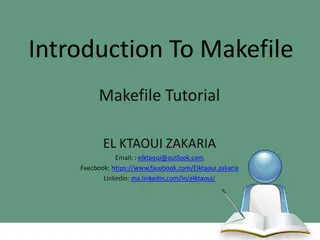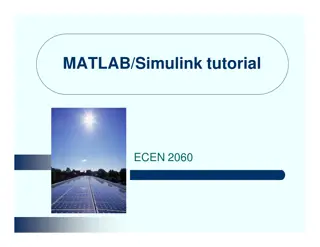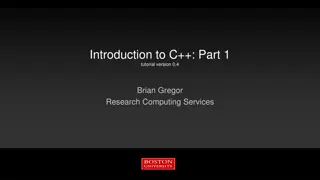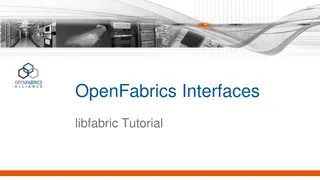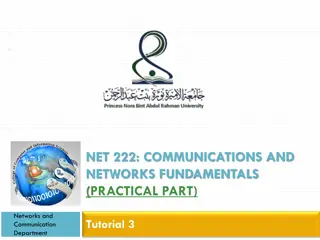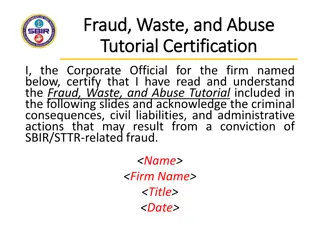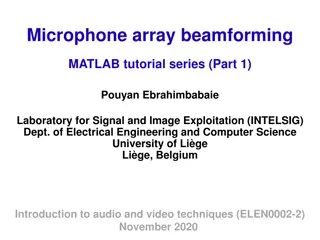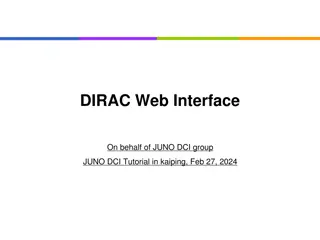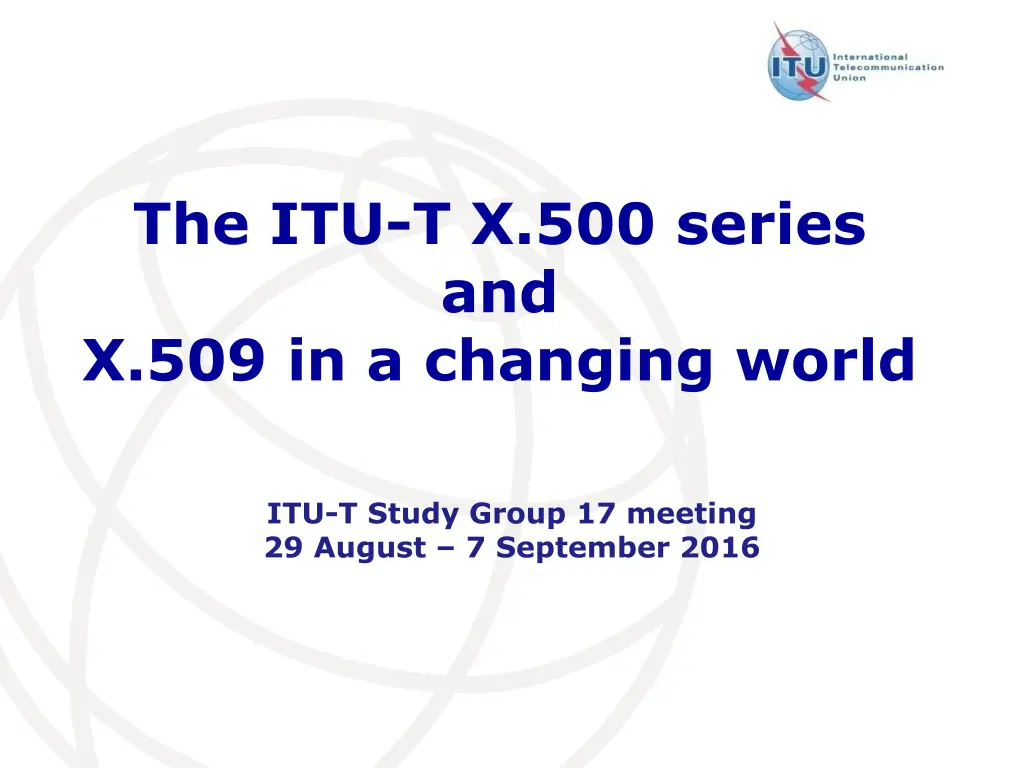
Understanding ITU-T X.500 Series and X.509 in a Changing World
Explore the evolution of ITU-T X.500 Series and X.509, the role of PKI, LDAP directories, and key management in ensuring trust, authenticity, privacy, and security in a digital landscape. Discover the significance of the eighth edition of ITU-T X.509 in providing clear specifications and clean separation, driving the global adoption of public-key infrastructure.
Download Presentation

Please find below an Image/Link to download the presentation.
The content on the website is provided AS IS for your information and personal use only. It may not be sold, licensed, or shared on other websites without obtaining consent from the author. If you encounter any issues during the download, it is possible that the publisher has removed the file from their server.
You are allowed to download the files provided on this website for personal or commercial use, subject to the condition that they are used lawfully. All files are the property of their respective owners.
The content on the website is provided AS IS for your information and personal use only. It may not be sold, licensed, or shared on other websites without obtaining consent from the author.
E N D
Presentation Transcript
The ITU-T X.500 series and X.509 in a changing world ITU-T Study Group 17 meeting 29 August 7 September 2016
The X.500/LDAP Directory An LDAP or X.500 directory is a general purpose directory Gives a set of specifications for: how objects are represented by entries in a directory how objects represented in a directory are named how information about objects is created, organised, interrogated, updated and deleted A directory can be distributed allowing: the establishment of a global Directory information to be maintained by the owner of information a separation between public and private domains possibility for replication of information
Directory Document Structure ISO/IEC 9594-1 | X.500 Services Overview of Concepts, Models, and ISO/IEC 9594-2 | X.501 Models ISO/IEC 9594-3 | X.511 Abstract Service Definition ISO/IEC 9594-4 | X.518 Procedures for Distributed Operation ISO/IEC 9594-5 | X.519 Protocol Specifications ISO/IEC 9594-6 | X.520 Selected Attribute Types ISO/IEC 9594-7 | X.521 Selected Object Classes ISO/IEC 9594-8 | X.509 frameworks Public-key and attribute certificate ISO/IEC 9594-9 | X.525 Replication
Rec. ITU-T X.509 until now The base specification for public-key infrastructure (PKI) The base specification for privilege management infrastructure (PMI) First edition in 1988 Eighth edition in 2016 PKI is widely deployed in the world Banking E-government Health Etc. 4
Rec. ITU-T X.509 until now The basis for other major security specifications: IPsec Transport layer security (TLS) Cryptographic message syntax (CMS) Smart grid security standards (IEC 62351 series) Other specifications requiring scaleable key management 5
What is PKI about? PKI is about: Trust (trust anchor concept) Validation of authenticity of information But also: Privacy and confidentiality Non-repudiation Tools and procedures for above 6
Eighth edition of Rec. ITU-T X.509 Significant revision: Removal of ambiguities Consistent and current terminology Consistent style Clean PKI and PMI specifications (directory aspects moved to other parts of the X.500 series) Clean separation between public-key certificates and attribute certificates New features Autorization and validation lists (whitelists) Trust broker (secure validation) 7
A changing world New countries are entering the PKI world Cloud computing Mobile technology Machine-to machine (M2M) communications In particular: IoT and smart grid with millions of entities 8
A changing environment Constraint environments: Memory constraints Processing capacity Bandwidth constraint Time constraints Economic constraints Mobile applications Huge networks 9
Possible items for next edition of X.509 Re-think the whole validation process to simplify it where possible for specific environments Further work on efficient validation including the concept of authorization and validation lists (AVLs) and trust broker To adopt new and more advanced cryptographic algorithms to meet the challenge of Quantum Computers. 10
Possible items for next edition of X.509 (cont.) Improve attribute certificate specifications. Alignment with the work done in IETF Evaluation of other ASN.1 encoding rules than BER/DER Check what the mobile (3GPP-LTE) industry is doing Machine readable certificate policies 11
ASN.1 and OIDs Geneva, Switzerland, 15-16 September 2014 12
What is ASN.1 ASN.1 is a data description language used to describe protocols. ASN.1 is abstract and independent of hardware operating systems. The bits on the wire are defined by Encoding rules. Multiple encoding rules are defined. Geneva, Switzerland, 15-16 September 2014 13
Data described in ASN.1 Two categories of data : Basic data : Boolean, Integer, Bit string, Octet String, Time types. Complex types : structured types like Sequence, Choice. Geneva, Switzerland, 15-16 September 2014 14
ASN.1 has no limitation on data No limitation on number values (useful for big numbers used in cryptography). No limitation on string size. No limitation on level of complexity on structured types. Geneva, Switzerland, 15-16 September 2014 15
Extensibility in ASN.1 ASN.1 mechanism interworking of successive versions on a given protocol. All standardized support this mechanism. has an which extensibility permits encoding rules Geneva, Switzerland, 15-16 September 2014 16
Constraints in ASN.1 types Data can be limited : Range value on number data types. Character set and size on string data types. Constraints can be checked during encoding/decoding operations. Constraints can be used by encoding rules to optimize the encoding. Geneva, Switzerland, 15-16 September 2014 17
Encoding rules for ASN.1 The first encoding rules were BER (Basic Encoding Rules) in which a type is encoded with three parts : A tag identifying the data type. A length : number of octets of the encoding. A content : 0 or more octets. Geneva, Switzerland, 15-16 September 2014 18
Canonical encoding rules In BER, a data can generally be encoded in several manners. For electronic signatures, two sets of encoding rules have been developed : CER (Canonical Encoding Rules) DER (Distinguished Encoding Rules) Geneva, Switzerland, 15-16 September 2014 19
Packed encoding rules Packed encoding rules (PER) have been developed bandwidth networks. In PER : Tags are not encoded. Lengths are encoded only when needed. The content is optimized using the constraints. for narrow Geneva, Switzerland, 15-16 September 2014 20
Other encoding rules XML encoding rules (XER) have been developed for interworking between applications. A conversion mechanism from XML Schema to ASN.1 has been developed. OER octet encoding rules has been developed for applications which need fast encoding. JER Javascript object notation encoding rules are under development. For legacy protocols, encoding instructions and Encoding Control Notation (ECN) have been defined. ASN.1 et XML Geneva, Switzerland, 15-16 September 2014 21
Usages of ASN.1 Many protocols : Directory : X500 and LDAP Mobile phone Network management Tools available application in high level programing languages. ASN.1 module database. for developing Geneva, Switzerland, 15-16 September 2014 22
Standardization of ASN.1 Common texts with ISO/IEC/JTC 1/SC 6. ITU-T X.680 series | ISO/IEC 8824 for ASN.1 language. ITU-T X.690 series | ISO/IEC 8825 for encoding rules. Geneva, Switzerland, 15-16 September 2014 23
Object Identifiers (OIDs) Initially defined in ASN.1 but now widely used to uniquely. Organized a tree with three first level arcs : itu-t (0) iso (1) joint-iso-itu-t (2) identify object Geneva, Switzerland, 15-16 September 2014 24
Usage of OIDs OIDs are used in many protocols : Network management identify the managed objects. In Directory (X.500 and LDAP) to identify object classes and attributes (SNMP) to Geneva, Switzerland, 15-16 September 2014 25
Standardization of OIDs Basic ISO/IEC/JTC 1/SC6 : ITU-T X.660 series | ISO/IEC 9834 ITU-T X.670 series | ISO/IEC 29168 texts common with Geneva, Switzerland, 15-16 September 2014 26
Assignation of OIDs Each entity responsible of an arc can delegate any subtree to another entity. An Object Identifier protocol has be developed. Many object identifier are registered in a OID database available at: http://www.oid-info.com resolution Geneva, Switzerland, 15-16 September 2014 27








